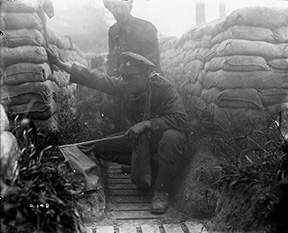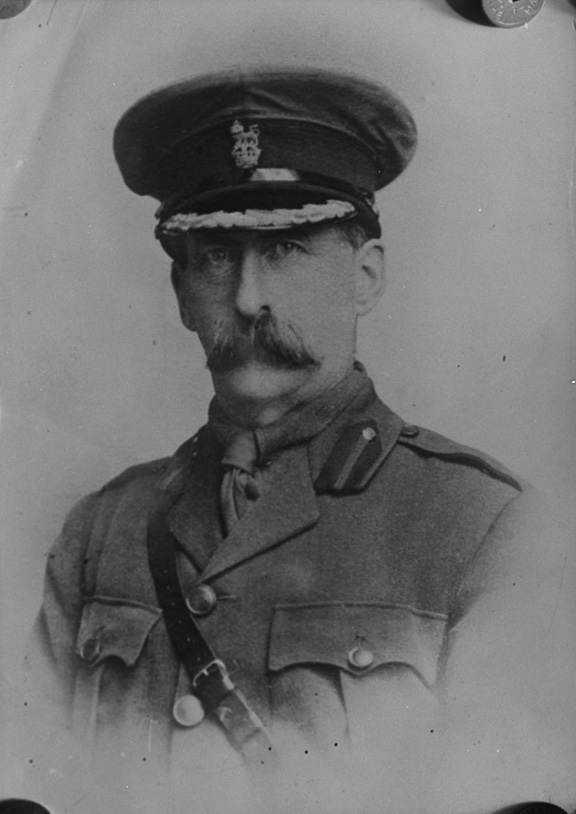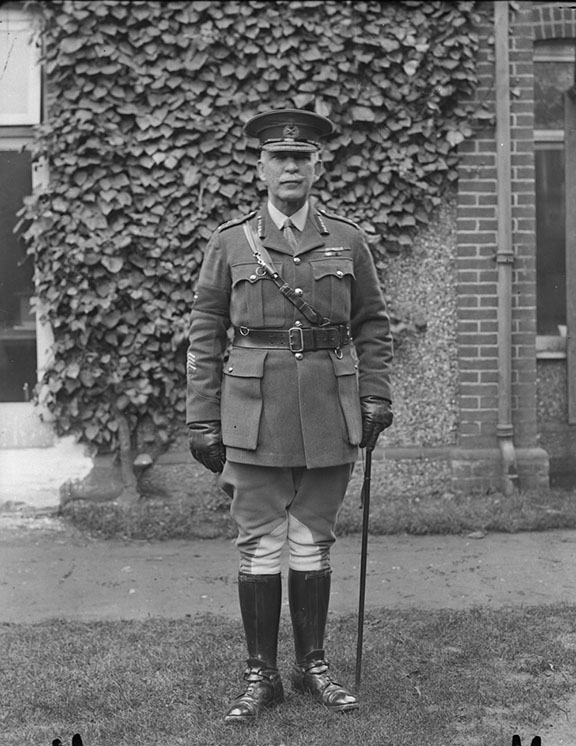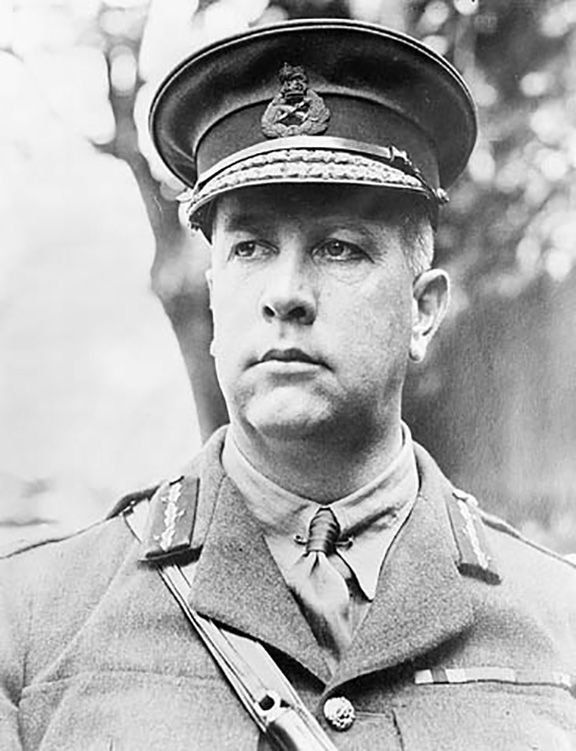Mount Sorrel
First World War

Attacking under smoke. Battle of Mount Sorrel. June, 1916.
Credit: Canada. Department of National Defence/Library and Archives Canada/PA-000112 (MIKAN no. 3520923)
Date
2-13 June 1916
Geographical parameters
Hill 60 – Kruistraathoek – Kruisstraat – Cloth Hall – Menin Road – the Ypres-Roulers Railway
Context
A battle honour formally entitled the “Battle of Mount Sorrel” and itself being part of the “Local Operations, 1916Footnote 1
Description
The Honour “Mount Sorrel” was awarded for the successful defence against a German attack on the high ground east of Ypres and the counter-attack that successfully regained all positions. The newly formed 3rd Canadian Division (Major-General M.S. Mercer) was placed in the line with four battalions forward. Early on 2 June Mercer had gone forward with the commander of the 8th Brigade (Brigadier-General V.A.S. Williams) to inspect the brigade's forward defences. The two senior officers were in the trenches of the 4th Canadian Mounted Rifles when, at 0600 hours, the Germans unleashed an enormous barrage on the Canadian positions in the area of Hills 60 and 62 east of Ypres. The German attack was fiercest in the area between 8th and 7th Brigades (Brigadier-General A.C. Macdonell), almost wiping out the 4th Canadian Mounted Rifles. Under intense bombardment, and in the face of well-planned infantry assaults, Canadian units fiercely defended their positions in all areas of the front. Reinforcements were moved in throughout the day and stopped the German advance. Lieutenant-General Byng, the Canadian Corps Commander, ordered a counter-attack for the night of 2 / 3 June. Delayed until the morning, the attack did close a gap in the Canadian line but did not accomplish its objective due to the attacking units having made an uncoordinated start. The Germans now had a commanding position overlooking the Canadian lines. They consolidated their gains by digging in and setting up machine gun positions and barbed wire to defend their new positions. While the Canadian Corps planned a counter attack, the Germans struck near Hooge detonating two large mines but the 6th Brigade holding that area continued to resist despite suffering heavy losses. Carried out mainly by the 1st Canadian Division (Major-General A.W. Currie), the counter-attack placed a heavy emphasis on the use of artillery. A large number of guns from other British formations were placed at the disposal of the Canadian Corps. The artillery was used to prevent enemy consolidation in front and support lines and to destroy German batteries. Four large barrages fell on the Germans to deceive them as to the beginning of the assault. The Canadian assault was launched at 1:30 am on 13 June. Covered by a heavy barrage of artillery, behind a smoke screen and under intense rain, the Canadians achieved surprise. In about an hour all of the ground lost since 2 June had been retaken. The Germans did attempt two counter-attacks on the morning of the 14th but these were broken up by artillery fire. The line was re-established almost exactly where it had been before the attack on the 2nd of June 1916, the Canadian Corps having suffered approximately 8000 casualties.

Major-General M.S. Mercer. 1914-1919
Credit: Canada. Department of National Defence/Library and Archives Canada (MIKAN no. 3357209)

Major-General Sir Archibald Cameron Macdonell was the General Officer Commanding the 1st Canadian Division from June 1917 on. Location unknown. Date unknown.
Credit: Canada. Department of National Defence/Library and Archives Canada (MIKAN no. 3218799)

Brigadier-General Victor A.S. Williams. Date unknown.
Credit: Canada. Department of National Defence/Library and Archives Canada PA-042157 ( MIKAN no. 3222332)

General Currie, Commander of the Canadian troops in France, and A.D.C. Location unknown. June, 1917.
Credit: Canada. Department of National Defence/Library and Archives Canada/PA-001370 (MIKAN no. 3191901)
Awarded to:
Currently serving units
- 26th Field Artillery Regiment, RCA
Award to The Manitoba Rangers (GO 71/30) - 48th Highlanders of Canada
Awards to the 15th Canadian Infantry Battalion, CEF (GO 110/29) and The 48th Regiment (Highlanders) (GO 110/29) - 56th Field Artillery Regiment, RCA
Awards to the 4th Canadian Infantry Battalion, CEF (GO 110/29) and The Dufferin Rifles of Canada (GO 110/29) - 87th Field Battery, RCA
Award to the King's Canadian Hussars (GO 71/30) - The Argyll and Sutherland Highlanders of Canada (Princess Louise's)
Awards to the 19th Canadian Infantry Battalion, CEF (GO 110/29) and The Argyll and Sutherland Highlanders of Canada (Princess Louise's) (GO 110/29) - The Black Watch (Royal Highland Regiment) of Canada
Awards to the 13th Canadian Infantry Battalion, CEF (GO 110/29), the 42nd Canadian Infantry Battalion, CEF (GO 110/29), and The Royal Highlanders of Canada (GO 110/29) - The British Columbia Dragoons
Awards to the 2nd Canadian Mounted Rifles Battalion, CEF (GO 110/29) and The British Columbia Dragoons (GO 110/29) - The British Columbia Regiment (Duke of Connaught's Own)
Awards to the 7th Canadian Infantry Battalion, CEF (GO 71/30), the 29th Canadian Infantry Battalion, CEF (GO 123/29), the 1st British Columbia Regiment (Duke of Connaught's Own) (GO 110/29), The North British Columbia Regiment (GO 123/29) and The Vancouver Regiment (GO 71/30) - The Calgary Highlanders
Awards to the 10th Canadian Infantry Battalion, CEF (GO 123/29) and The Calgary Highlanders (GO 110/29) - The Cameron Highlanders of Ottawa
Award to The Ottawa Highlanders (GO 110/29) - The Canadian Grenadier Guards
GO 110/29 - The Canadian Scottish Regiment (Princess Mary's)
Awards to the 16th Canadian Infantry Battalion, CEF (GO 110/29), the 3rd Pioneer Battalion (48th Canadians), CEF (GO 110/29), and The Canadian Scottish Regiment (GO 110/29) - The Essex and Kent Scottish
Awards to the 18th Canadian Infantry Battalion, CEF (GO 110/29) and The Essex Scottish (GO 110/29) - Governor General's Foot Guards
Awards to the 2nd Canadian Infantry Battalion, CEF (GO 123/29) and The Governor General's Foot Guards (GO 32/32) - The Governor General's Horse Guards
Awards to the 4th Canadian Mounted Rifles Battalion, CEF (GO 110/29), The Governor General's Body Guards (GO 71/30 and GO 112/35), and The Mississauga Horse (GO 110/29) - The Halifax Rifles (RCAC)
Award to The Halifax Rifles (GO 71/30) - The Hastings and Prince Edward Regiment
Awards to The Hastings and Prince Edward Regiment (GO 71/30) and The Northumberland Regiment (GO 71/30) - The King's Own Calgary Regiment (RCAC)
GO 110/29 - The Lake Superior Scottish Regiment
Awards to the 52nd Canadian Infantry Battalion, CEF (GO 123/29) and The Lake Superior Regiment (GO 110/29) - The Lorne Scots (Peel, Dufferin and Halton Regiment)
Award to The Halton Rifles (GO 71/30) - The Loyal Edmonton Regiment (4th Battalion, Princess Patricia's Canadian Light Infantry)
Awards to the 49th Canadian Infantry Battalion, CEF (GO 110/29) and The Edmonton Regiment (GO 110/29) - The North Saskatchewan Regiment
Awards to the 1st Canadian Mounted Rifles Battalion, CEF (GO 110/29), the 5th Canadian Infantry Battalion, CEF (GO 110/29), The Saskatchewan Mounted Rifles (GO 110/29), The Saskatoon Light Infantry (GO 110/29) and The Prince Albert Volunteers (GO 71/30) - The Nova Scotia Highlanders
Awards to the 25th Canadian Infantry Battalion, CEF (GO 123/29), The Colchester and Hants Regiment (GO 110/29) and The Pictou Highlanders (GO 71/30) - The Princess of Wales' Own Regiment
Awards to the 21st Canadian Infantry Battalion, CEF (GO 123/29) and The Princess of Wales' Own Regiment (GO 110/29) - Princess Patricia's Canadian Light Infantry
GO 123/29. - The Queen's Own Cameron Highlanders of Canada
Awards to the 43rd Canadian Infantry Battalion, CEF (GO 110/29) and The Queen's Own Cameron Highlanders of Canada (GO 110/29) - The Queen's Own Rifles of Canada
Awards to the 3rd Canadian Infantry Battalion, CEF (GO 123/29) and The Queen's Own Rifles of Canada (GO 110/29) - The Queen's York Rangers (1st American Regiment) (RCAC)
Awards to the 20th Canadian Infantry Battalion, CEF (GO 110/29), The Queen's Rangers, 1st American Regiment (GO 110/29) and The York Rangers (GO 71/30) - Le Régiment de Maisonneuve
Awarded through perpetuation of the 41st Canadian Infantry Battalion, CEF (CAO Part “A” 33-1 and 229-1 10 July 1961). - Royal 22e Régiment
GO 110/29 - The Royal Canadian Hussars (Montreal)
Awards to the 1st Canadian Motor Machine Gun Brigade, CEF (GO 110/29) and the 1st Motor Machine Gun Brigade (GO 110/29) - The Royal Canadian Regiment
Awards to the 1st Canadian Infantry Battalion, CEF (GO 110/29), The Royal Canadian Regiment (GO 110/29) and The Canadian Fusiliers (City of London Regiment) (GO 110/29) - The Royal Hamilton Light Infantry (Wentworth Regiment)
Awards to the 4th Canadian Infantry Battalion, CEF (GO 110/29) and The Royal Hamilton Light Infantry (GO 110/29) - The Royal Highland Fusiliers of Canada
Award to The Highland Light Infantry of Canada (GO 71/30) - The Royal Montreal Regiment
Awards to the 14th Canadian Infantry Battalion, CEF (GO 110/29) and The Royal Montreal Regiment (GO 110/29) - The Royal New Brunswick Regiment
Awards to the 26th Canadian Infantry Battalion, CEF (GO 110/29), The Carleton Light Infantry (GO 110/29), The Saint John Fusiliers (GO 110/29), The York Regiment (GO 71/30) and The New Brunswick Rangers (GO 71/30) - The Royal Regiment of Canada
Awards to the 3rd Canadian Infantry Battalion, CEF (GO 123/29), the 58th Canadian Infantry Battalion, CEF (GO 110/29), The Royal Grenadiers (GO 110/29), and The Toronto Regiment (GO 110/29) - The Royal Regina Rifles
Awards to the 28th Canadian Infantry Battalion, CEF (GO 110/29) and The Regina Rifle Regiment (GO 110/29) - The Royal Westminster Regiment
Award to The Westminster Regiment (GO 110/29) - The Royal Winnipeg Rifles
Awards to the 8th Canadian Infantry Battalion, CEF (GO 110/29), the 10th Canadian Infantry Battalion, CEF (GO 123/29), the 27th Canadian Infantry Battalion, CEF (GO 123/29), The Winnipeg Rifles (GO 110/29) and The Winnipeg Light Infantry (GO 110/29) - The Saskatchewan Dragoons
Award to The King's Own Rifles of Canada (GO 110/29) - The Sherbrooke Hussars
Awards to the 5th Canadian Mounted Rifles Battalion, CEF (GO 110/29) and the 7th/11th Hussars (GO 10/39) - The South Alberta Light Horse
Awards to the 31st Canadian Infantry Battalion, CEF (GO 110/29), The South Alberta Regiment (GO 110/29), the 15th Canadian Light Horse (GO 71/30), The Edmonton Fusiliers (GO 71/30) and The Alberta Mounted Rifles (GO 88/31) - Les Voltigeurs de Québec
GO 71/30
Units on the Supplementary Order of Battle
- 4th Princess Louise Dragoon Guards
Award to The Princess Louise Dragoon Guards (GO 71/30) - 12th Manitoba Dragoons
GO 71/30 - 24th Field Artillery Regiment, RCA
Award to The Kootenay Regiment (GO 110/29) - 27th Field Artillery Regiment, RCA
Award to The Eastern Townships Mounted Rifles (GO 110/29) - 50th Field Artillery Regiment (The Prince of Wales' Rangers), RCA
Awards to the 2nd Canadian Infantry Battalion, CEF (GO 123/29) and The Peterborough Rangers (GO 110/29) - 88th Field Battery, RCA
Award to the King's Canadian Hussars (GO 71/30) - 118th Medium Battery, RCA
Awards to the 1st Canadian Mounted Rifles Battalion, CEF (GO 110/29) and The Manitoba Mounted Rifles (GO 5/31) - Royal Rifles of Canada
GO 71/30 - The Victoria Rifles of Canada
Awards to the 24th Canadian Infantry Battalion, CEF (GO 110/29), the 60th Canadian Infantry Battalion, CEF (GO 110/29), and The Victoria Rifles of Canada (GO 110/29) - The Winnipeg Grenadiers
GO 110/29
Disbanded Units
- 1st Canadian Pioneer Battalion, CEF
GO 88/31 - 2nd Canadian Pioneer Battalion, CEF
GO 123/29 - The Manitoba Regiment
GO 123/29 - The North Alberta Regiment
Awards to the 31st Canadian Infantry Battalion, CEF (GO 110/29) and The North Alberta Regiment (GO 110/29)